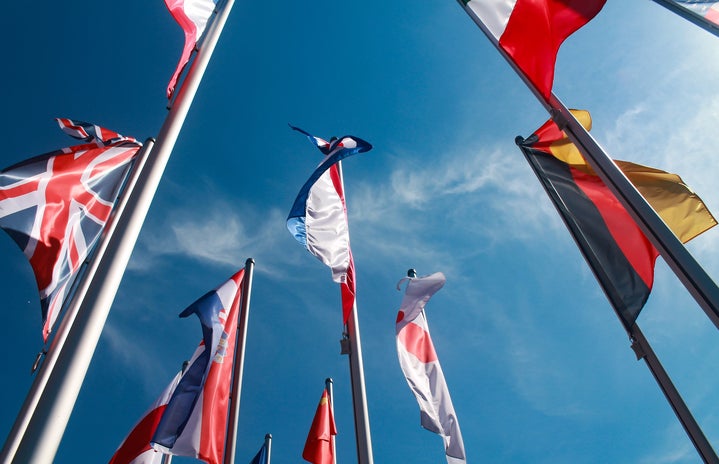If you had a drawer full of sewing supplies, you’d put a little container in the corner for your buttons. If you had a drawer full of buttons, you’d organize them by color. In Miami-Dade County, 71.57-percent of people are Hispanic/Latino. Living there for most of my life, I didn’t even realize we were a drawer full of buttons. There were lots of conversations debating whether Cuban food is better than Puerto Rican food, or surrounding the differences between a Venezuelan accent and a Colombian accent. Then I came to Tallahassee, where 6.9-percent of the population is Hispanic, and suddenly I’m a minority. You might think that it made me feel more unique, but what they don’t tell you about becoming a minority overnight is that it’s strangely equalizing. I simplify so much of the nuance of my cultural background into the little container labeled “Hispanic.” However, everyone I’ve met in this little southern city is happy to learn, they just weren’t given the opportunity before. So, here it is. This is a little look into the nuances of Hispanic identities!
Given the subject matter, I figured I shouldn’t be the only one involved in this. So, I reached out to two awesome Hispanic women at Florida State University, Victoria Moll and Aide Aguilar Ayungua, and interviewed them. Thank you both so much for your help!
Victoria is an English, Editing and Media major whose mother is Puerto Rican and father is Dominican. Aide is a master’s student studying Applied American Politics who was born in Mexico and arrived in the United States in 2005. I’m Sabrina, a Creative Writing major whose father is Dominican, and my mother grew up in Spain.
During our interview, Victoria said when she was younger she thought all Hispanic people were the same. She remembers Americans grouping all Spanish speakers into one category. However, as she grew up, she started to notice differences, even between her mom’s side of the family and her dad’s. Though the Dominican Republic and Puerto Rico have tons of similarities, like the Taino and African influences, Victoria said quite eloquently that “all these pockets of people on these islands create subcultures.”
Similarly, I asked Aide for her opinion on which Hispanic cultures are the most and least similar to her Mexican roots. She pointed out that a lot of different cultures and traditions live within Mexico. Some of these “pockets” of cultures, as Victoria would put it, share a lot with neighboring countries like Guatemala and El Salvador, but she can’t speak for all of Mexico. The least similar, she said, would probably be Spain. Though Spain obviously played an important part in the history of all Hispanic countries, I agree that its culture now feels like an outlier.
So, you kind of get the idea. If you didn’t know before, now you know that there are tons of nuances and differentiation between Hispanic cultures. What happens when we get to a place like Tallahassee where we are not necessarily the majority? Well, for one thing, there’s certainly a difference in our culinary experience. According to Google, the nearest Dominican restaurant is El Rincon Latino Colombian restaurant, so no queso frito until graduation. Victoria seems to have been chasing down a Puerto Rican food truck she heard about to no avail and Aide graciously recommended some Mexican food but still sometimes drives over half an hour for more authenticity. Even a lot of the ingredients we would need to make our food, we haven’t been able to find.
Music is different, some social norms differ and hearing someone speak Spanish is somewhat rare. How do we maintain our ties to our specific culture? Aide is the president of the Mexican Student Association. The way she describes it, it sounds like a really wonderful community to convene with. Almost like she has her family with her in Tallahassee. Victoria says that for her being at home is just experiencing the culture, while being in Tallahassee is like “drawing it up from what (she) had.” So, she stocks up on her culture by collecting art, using her greca to make coffee the way she learned at home, and obtaining certain ingredients when she visits home. She also noted that she tries to absorb the culture in Tallahassee, and when given a chance, people will do the same for her. “It’s surprising how when you give people a chance to engage with your culture they will.” She tells me this while recalling a “Latin Night” at Baja’s where she saw “some white kid singing Bad Bunny” and rejoiced. I have to say, I share her admiration. In fact, it’s kind of why I’m writing this article.
If you have any Hispanic friends whose specific cultural background you know nothing about, consider asking them about it. You might learn some surprising facts that could help you understand them a little bit better. If you are Hispanic or any newfound minority, I hope it helps to know that a lot of us are having the same experiences and frustrations. I know I was nodding emphatically along with some of Victoria and Aide’s keen observations and that alone helps a little. Use the resources at FSU! I feel that this school does have some wonderful organizations, faculty, and students that provide a sense of community (shout out MASA).
Want to see more HCFSU? Be sure to like us on Facebook and follow us on Instagram, Twitter, TikTok, YouTube and Pinterest!


